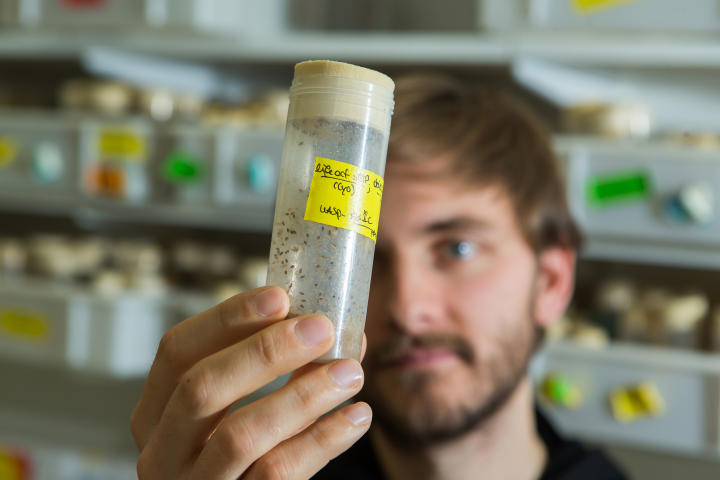Wound Closure in the Fruit Fly: Which Gene Functions Control Migration of Blood Cells?
Whenever we hurt ourselves blood cells migrate to the wound in order to close it. The driving force for migration is a network of so called actin proteins. Cell biologist Dr. Sven Bogdan wants to explore which gene functions regulate these proteins so that they make a targeted movement possible. For that he works with the fruit fly Drosophila melanogaster which has been established as a model organism in biology for over 100 years.
The project depends on the cooperation between different scientific disciplines. In order to handle their huge amount of image and video data showing cell movement the biologists need a way to analyze it automatically. That's why the computer scientists headed by Prof. Xiaoyi Jiang have developed a computer program for them which is based on algorithms. Not only does the program visualize and track the cells in their dynamic shape and movement but it also draws conclusions on gene functions regulating the whole process. Due to this mathematical procedure the biologists get statistically relevant data they never could have raised themselves.
Photos


Dr. Sven Bogdan (left) leads the biological part of the project. Assisted by PhD student Moritz Sander he analyses the migration of cells. The biological video was taken by high resolution fluorescence microscopy.© CiM - Heiner Witte 
The group around Sven Bogdan collects several cultures of fruit flies.© CiM - Heiner Witte 
PhD student Meike Bechtold gets fruit flies for investigation from the store room. Here the flies are held under constant 18°C.© CiM - Heiner Witte 
The mechanical force that drives cell migration is provided by the so called cytoskeleton, which here is tagged in red by PhD-student Anna Julia Squarr. What regulates this skeleton is the issue of the biologists. But for that…© CiM - Heiner Witte 
… they need statistically valid data. With the help of mathematic algorithms the computer scientists in the team of Prof. Dr. Xiaoyi Jiang (left) turn the biological video data into numeral data.© CiM - Frank Schlegel

